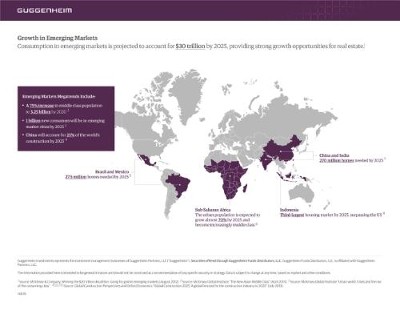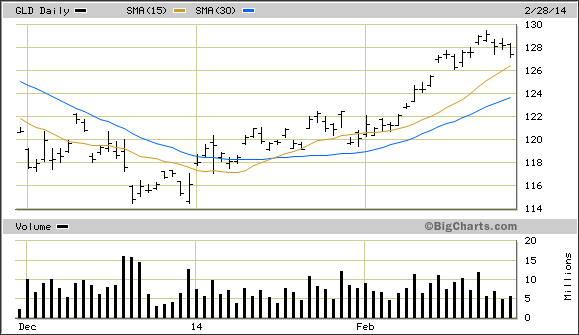Metals and Emerging Markets Investing Daily
Post on: 19 Июнь, 2015 No Comment

My colleagues Roger Conrad, Elliot Gue and I have written extensively on metals in several publications throughout the years. But as the metals story is inseparable from the overarching theme of economic growth in Asia and other emerging markets, we have decided to incorporate our metals coverage in the The Silk Road Investor .
Our view is that commodities are experiencing a long-term bull market that will last for years, despite periodic ups and downs. As things stand now, investors are increasingly allocating a larger share of their investment capital to hard assets and we expect this trend to continue.
Several factors will continue to lead investors to seek shelter in metals: Quantitative easing in developed economies and loose monetary policies in the rest of the world; strong demand for infrastructure upgrades in emerging markets such as India and China; and, of course, tight supply of hard assets.
Although metal prices and have gone on a run for some time, we believe theyll continue on this trajectory. A good signpost is that prices for oilthe worlds ultimate commodityare still far below the USD150 per barrel (bbl) high that eventually led to the commodity crash of 2008.
Below youll find an excerpt from a longer article on rare earth metals that Elliott Gue wrote for The Silk Road Investor .
The Rare Earths Boom
By Elliott H. Gue
A group of obscure metals known as rare earth elements (REE), also known as rare earth metals, was suddenly thrust into the limelight this year. Last spring, the US Government Accountability Office (GAO) published a report highlighting how reliant the US Department of Defense has become on imported supplies of REEs.
Thats a huge strategic vulnerability, particularly when you consider that virtually all supplies of these crucial elements are imported from China. The US will be desperately trying to encourage domestic production in coming years.
In early July, China shocked the markets by announcing it was slashing export quotas by 72 percent in the latter half of 2010. The result: Prices of REEs like cerium and lanthanum soared ten-fold in a matter of weeks. The ensuing chaos prompted German Chancellor Angela Merkel to call for the development of new supplies. Meanwhile, US Secretary of State Hillary Clinton reportedly held talks with Chinese officials to discuss global REE supply issues.
Most investors and consumers have still never heard of metals like neodymium and terbium but without REEs there could be no iPods, hybrid electric vehicles or color televisions; in many cases there are no known substitutes. Supplies of REEs will remain tight for years to come as there are no major new mines operating outside China and only two are scheduled to open over the next few years.
REEs are generally divided into two categories, light rare earths and heavy rare earths. The light REEs include the elements with the lowest atomic numbers: lanthanum, cerium, praseodymium, neodymium and samarium. Since light REEs are generally far more abundantoften accounting for well over 90 percent of a given deposittheyre also less expensive than the more uncommon heavy REEs.
What makes REEs rare is that they are seldom found in ore form in sufficient quantity and concentration to be produced economically. There are only a handful of known deposits around the world that are rich in REEs. In addition theres no way to mine solely for the higher value heavy REEs like Europiumboth light and heavy REEs naturally occur in all deposits in varying quantities.
The market for REEs in 2010 is less than $7.8 billionits a tiny market compared to big industrial commodities like copper, coal or iron. But while REEs are obscure, theyre absolutely crucial raw materials for a long list of high-tech products and industry groups. In fact, in many cases there is either no known substitute for REEs or available substitutes are vastly inferior. Consumption of REEs globally is soaring thanks to their importance in products as diverse as compact fluorescent lights, hybrid cars and permanent magnets used in advanced motors and speakers.

Total demand for rare earth oxides is projected to rise to 225,000 metric tons in 2015 from 124,000 metric tons in 2008, an 81 percent increase. The fastest growth is likely to come from metal alloys, particularly for advanced batteries, permanent magnets used in high-tech products and miniature motors and phosphors in color displays. Alloys and magnets combined are projected to account for roughly half of all rare earths used worldwide in 2015.
Currently, China controls almost the entire global supply chain for REEs and its likely to remain the dominant supplier for years to come. There are three basic steps in the process of producing usable rare earth oxides (REOs): mining, milling to produce a concentrated form of REEs and processing to separate the individual REEs and make REOs. Processing is a complex undertaking because the chemical similarity of the various REEs makes it difficult to isolate and separate individual elements.
Its estimated that China currently controls 97 percent of global REE mine production, milling and processing capacity. Other countries including Japan have the ability to process REOs into usable alloys and materials but that would be impossible without raw material supply from China.
This has not always been the case. From the mid-1960s through the mid-1980s the largest source of REEs globally was the Mountain Pass mine in California. In the latter part of the 1980s cheap-to-produce REO supply from China effectively crowded out most other sources of supply. And since the late-1990s Mountain Pass has produced REOs only intermittently. At present, mines located outside China are capable of producing less than 10,000 metric tons per year.
Starting in the summer of 2008, the Chinese government began to take concrete steps to limit exports of rare earth elements. These efforts have come in many forms including the imposition of higher export taxes on REEs and the use of export quotas for both foreign and domestic companies operating in China. The nation has gradually reduced those export quotas from more than 65,000 metric tons in 2005 to about 30,000 tons in 2010. The nation touched on a major rally in REE prices earlier this year after announcing a much smaller-than-expected export quota for the second half of 2010.
Chinese domestic demand for rare earths is projected to reach around 130,000 metric tons in 2015 with the rest of the world consuming about 95,000.
Bottom line: The supply/demand balance looks tight and the rest of the world will need to develop alternative supplies to make up for falling Chinese exports.
For more on rare earths and which stocks to own, visit www.SilkRoadInvestor.com














